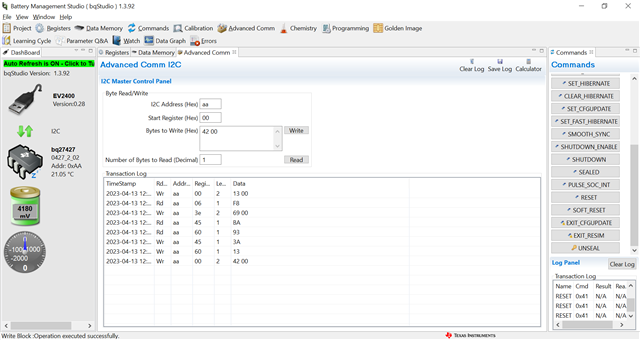Other Parts Discussed in Thread: BQ27427, BQSTUDIO, BQ27426
I am evaluating the BQ27427 EVM connected to a test rig which charges and discharges the battery.
While Temperature() and Voltage() commands work as expected, the reported StateOfCharge() looks wrong: it decreases while the battery is charging and increases while discharging, at some point it stays at 99% or jumps randomly.
What could be the reason for this?
Investigating this, I noticed that AverageCurrent() shows a positive value while discharging and a negative value while discharging - is this by design? Could this be the reason for misbehaving StateOfCharge()?
I triple-checked the wiring on the EVM:
- PACK- of the BQ27427 is connected to LiPo cell's negative terminal, PACK+ to the positive
- LOAD+ and CHARGER+ of the BQ27427 are connected to our battery-test-rig's positive terminal, LOAD- and CHARGER- to the negative
- J10 connects with the I2C interface of our microcontroller board (GND, SDA, SCL)



